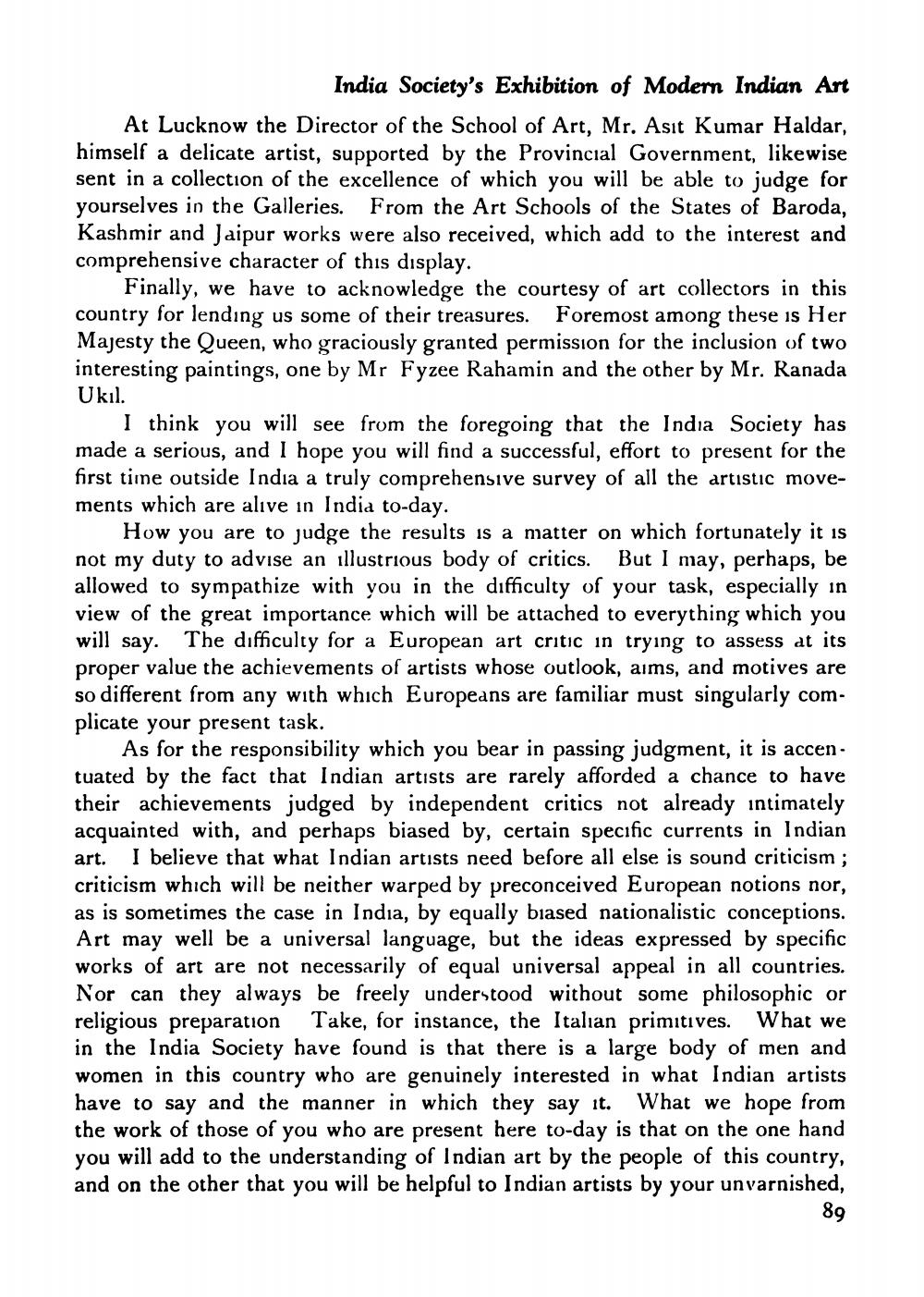________________
India Society's Exhibition of Modern Indian Art
At Lucknow the Director of the School of Art, Mr. Asit Kumar Haldar, himself a delicate artist, supported by the Provincial Government, likewise sent in a collection of the excellence of which you will be able to judge for yourselves in the Galleries. From the Art Schools of the States of Baroda, Kashmir and Jaipur works were also received, which add to the interest and comprehensive character of this display.
Finally, we have to acknowledge the courtesy of art collectors in this country for lending us some of their treasures. Foremost among these is Her Majesty the Queen, who graciously granted permission for the inclusion of two interesting paintings, one by Mr Fyzee Rahamin and the other by Mr. Ranada Ukil.
I think you will see from the foregoing that the India Society has made a serious, and I hope you will find a successful, effort to present for the first time outside India a truly comprehensive survey of all the artistic movements which are alive in India to-day.
How you are to judge the results is a matter on which fortunately it is not my duty to advise an illustrious body of critics. But I may, perhaps, be allowed to sympathize with you in the difficulty of your task, especially in view of the great importance which will be attached to everything which you will say. The difficulty for a European art critic in trying to assess at its proper value the achievements of artists whose outlook, aims, and motives are so different from any with which Europeans are familiar must singularly complicate your present task.
art.
As for the responsibility which you bear in passing judgment, it is accentuated by the fact that Indian artists are rarely afforded a chance to have their achievements judged by independent critics not already intimately acquainted with, and perhaps biased by, certain specific currents in Indian I believe that what Indian artists need before all else is sound criticism; criticism which will be neither warped by preconceived European notions nor, as is sometimes the case in India, by equally biased nationalistic conceptions. Art may well be a universal language, but the ideas expressed by specific works of art are not necessarily of equal universal appeal in all countries. Nor can they always be freely understood without some philosophic or religious preparation Take, for instance, the Italian primitives. What we in the India Society have found is that there is a large body of men and women in this country who are genuinely interested in what Indian artists have to say and the manner in which they say it. What we hope from the work of those of you who are present here to-day is that on the one hand you will add to the understanding of Indian art by the people of this country, and on the other that you will be helpful to Indian artists by your unvarnished,
89




